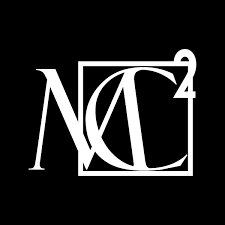
KNOWLEDGESTREAM AT-A-GLANCE
Marketing Leadership Facing COVID-19
ABSTRACT
Recent shocks to live events and tradeshows and virtual teams are causing marketers to seek for new ways to plan, design and execute brand experiences. During this transformation, we want to provide market-wide thought leadership explore how companies can best transition through this unprecedented time.
PARTICIPANTS















OBJECTIVES
1. Current State: Understand what marketers are experiencing, wrestling with and doing
2. Best Practices: What can marketers do to mitigate risk
3. Future State: How will these events impact the short and longer term and what marketers should do now to prepare
4. Thought Leadership: Product a range of content and information to add strategic value to current clients and prospects
End Date: Jun 19, 2020
CONTRIBUTIONS
ACTIVITY
90 Days
6 Themes
49 Contributors
418 Posts
132 Comments
316 Followers
OUTPUTS
6 Slide Deck
5 Blog Post
1 Video
18 Social Post
2 AMP Story
CALLS ATTENDED
• 2020-03-21 - Prelaunch Call
THEME #1
Current State
THEME SUMMARY
COVID19 has caused unprecendent disruptions to our personal and professional lives. We explored the impact to marketing leaders, plans for marketing, events and shows, how they are mitigating as well as the questions they are wrestling with.
- Businesses are scrambling to care for and motivate their people, and support customers while upholding fiduciary responsibilities and making difficult choices.
- Leadership is trying to balance planning which has become a day to day exercise and to anticipate and plan for the ongoing cycles of near and longer term change.
- The shift to digital/virtual for events and shows has been accelerated and leaders are actively exploring, planning and testing how to best utilize the tools and overcome the gaps vs. live events.
RECOMMENDED NEXT STEPS
Leaders must demonstrate high EQ during this period assessing all actions through a heightened "lens" of how their actions and words impact their team, customers and partners. Events and shows will be severely impacted in the near term and likely to evolve significantly over the long term. Companies need to prepare for alterative approaches and remain flexible to respond to a continuing fluid situation.
The impact of COVID19 has been extreme. Some businesses scramble to keep up with high demand while others' have seen revenue dry up. Business development strategies have had to evolve dramatically. And, everyone is navigating leading from a distance.
OVID 19 brought an unprecedented shift in Supply & Demand for my company. The consumer segment has been seeing a peak demand for our over-the-counter products (especially Tylenol, face wash) while demand for all surgical products diminished significantly as most elective surgeries were cancelled.
COVID slammed the brakes on our business development efforts. For marketing, we are completely shifting from selling to (non-revenue) serving, reaching out to our clients with impromptu phone calls and they are being picked up! It's a hard time to be a business -- but a great time to be human!
One challenge I've faced is leading from a distance. Considering how to leverage tools and resources ensure my leadership style is just as effective remotely has been a new learning for me but one that I believe will benefit my team as well as myself once we return to our typical work environment.
Leaders are trying to balance the personal impact this has had on the them and their teams while being fiscally responsible and prioritizing for today and where to go tomorrow.
As a virtual care company, working as a distributed team, we've been built for these times. My focus 1) finance (stretch cash to survive), 2) mindset (convey how our business model, product, team are appropriately set-up to thrive in the new world) and 3) systems (agility and resilience).
As a leader, I have been applying all leadership principles at once: sense of urgency, adaptability, calmness, empathy, prioritization, and managing through crisis.
I’ve had to put people before profits and find adaptive solutions to allow people to keep working in new ways. And in truly tough cases I’m giving people 6 weeks PTO. But after 6 weeks, I have not made a decision yet what I will be able to do.
Leadership is being tested and more than ever they need to leverage principles that are foundational for great leadership. At the same time, they are trying to lead with fragmented teams and determining how to utilize available tools.
Times of crisis tests the true character of any human being. For me, as in the words of Jim Collins, a key tenet of transformational leadership is knowing how to balance your IQ and EQ. Inspiration, motivation, doing the correct things and doing things correctly are hygiene.
You have to check your depth of resilience, toughness and strength of your will power. With each day passing by I believe my organization and I are becoming more resilient and more positive and in the words of Charles Darwin “more fitter to survive”.
One challenge I've faced is leading from a distance. Considering how to leverage tools and resources ensure my leadership style is just as effective remotely has been a new learning for me but one that I believe will benefit my team as well as myself once we return to our typical work environment.
Marketing plans have been thrown out the window. Planning and messaging are evolving day by day and many are turning to digital to rapidly respond to communicate and stay connected with consumers and customers.
Planning by the day - This is the time when communication needs to be planned everyday, assessing the current situation & sentiment. The annual plans have gone completely haywire, and it is all about a robust plan to bounce back when life is back to normal.
Modifying the dialogue - All marketing communication is about being sensitive to the situation & not sounding opportunistic.
Digital is the sole focus with content that helps make sense of the chaos is being churned out at a very rapid rate. We are creating content that is immensely shareable & working with industry bodies to co-brand and distribute the content that is helpful and empathetic.
In person trade shows and events are not an option and it is still too soon to know when they may return. Some have made the call...others are waiting. All suspect the future will never be the same and beginning to explore alternatives.
Nearly all trade shows and events have been cancelled. Some have moved online but I suspect it will be less impactful to drive sales. We have hosted two educational webinars. Some people have more time (working from home) and are looking for ideas and education.
We have 3 trade events for July, September, November. We are seriously investigating virtual live streaming shows. For education and training, this is an option. But for actual trade shows where you want the serendipity of walking a show floor, virtual may not be enough.
All our events have been cancelled through the summer. We've also decided not to participate or sponsor any events that bring people together physically for the foreseeable future. Many partners are in denial that their event, trade shows, etc can still happen this summer or Fall.
A complete reinvention is anticipated but there are real concerns about virtual's ability to replicate the social and human contact that comes from in person shows and events. COVID19 is accelerating a shift that many felt was coming.
I see a complete "re-invention" of the trade shows and corporate events. I think the same goals can be achieved virtually and in more targeted and cost-effective way. Do casual meetings and connections even matter? Buyers don't buy much this way anymore.
Events and trade shows provide what we all missing -- face to face human contact. From a business perspective, that's not just nice to have -- it's one of those previously-unseen and undervalued must-have experiences that builds the trust necessary to make major decisions and major purchases.
They're virtually gone and they've gone virtual. The gradual adoption of online methods has been shoved ahead 5+ years in remote work, remote medicine, and remote learning. Those changes will not die away once we kill the virus.
Many leaders are actively shifting approaches to overcome the loss of live events, testing the waters and accelerating efforts to build and test plans for the future.
Over time, our small firm became more dependent on events for new business development, so for the short term, we are focusing on developing the relationships we began and bringing new solutions to them. However, we are not expecting much sales success in 2 Q -- nor are our large B2B clients.
To have a successful digital event, you need to look at innovative ways of engaging the audience, making sure that the flow is adjusted to a digital platform & that you are able to get those many people together seamlessly so we can acheive goals of an originally planned physical event.
I turned my event into a virtual event by choosing an online platform, revamped my marketing materials, and reached out to a few local bloggers to help spread the world. The event turned out to be a bigger success virtually with less overhead and more profit. I plan to now host more virtual events.
Marketing leaders are wrestling with a myriad of questions...how to effectively lead teams, how to drive alignment when parties are scattered and the big question...where do we go from here.
How to keep employees motivated and safe. Monthly cultural events and internal training have been put on hold. I worry morale may slip in the coming weeks. I have been trying to find new ways to keep everyone positive and motivated while realizing they are dealing with issues at home, too.
What will happen when markets do begin to return? Will there be a flood of demand? Will consumers return to old patterns, or will new habits (ecommerce, grocery delivery) persist at some level? How long will consumers take to consume their hoards?
The largest issue we are facing is how to create a "buying consensus" which is required for large B2B decisions and purchases which is now more difficult when people are more physically apart. Are all companies going to be able to solve their strategic problems on the 'Hollywood Squares' of Zoom?
THEME #2
Going Virtual
THEME SUMMARY
With so many companies forced or choosing to work from home and events and trade shows shut down, many are turning to or considering virtual and streaming options to continue to run business. We explored virtual alternative approaches, tools and what is needed to maximize impact of virtual.
- Necessity drives and accelerates innovation. Exploration in virutal for events and shows has been accelerated as no one knows when and how the future will play out.
- While there are many benefits to using virtual, entirely or as a component, a key challenge is how to replicate the emotional connection and networking that comes with face to face interactions.
- Many tools are being explored as traditional meeting options like Zoom and Teams have limitations.
RECOMMENDED NEXT STEPS
The following recommendations can help in the short term, as live events are paused, and further improve events of the future. Hybrids have been developing and will only accelerate once live events are possible. Explore how to virtual can encourage networking and relationship building of F2F interactions. Engagement is critical and the devil in the details around what happens pre, during and post events. Build best practices to set up clients for maximum impact.
The Show Must Go On - Events play an important role for customers and employees and while COVID19 has made it challenging there is much interest and effort to replicate the benefits of face to face events in virtual enviroments. .
Instead of outrightly cancelling events, we converted some of them to virtual events. Some events like case study competition for colleges was turned into a fun virtual event with some interesting social media challenges to keep them engaged.
I have participated in more virtual events the past few weeks than ever before. This confirms that people do not want to cancel or postpone events, but are open to evolving them. There are several platforms to stream live, so businesses can’t allow Covid-19 to stop them from connecting.
Trade shows are not only the single most important point to engage customers for funnel creation & migration, they are also a prime location to get all WW sales & GTM personnale "up close and personal" with the products & solution, which is invaluable for selling them properly.
Opportunities & Challenges - While virtual offers flexibility and more people to engage, it comes with challenges to keep people engaged as it is much easier to 'walk out" of your computer screen than to leave a meeting or show that you traveled to.
Opportunity to engage over a longer period of time (1 week instead of 48 hours), and therefore explore topics/themes in more depth. Can structure an online engagement/workshop to lead to a decision.
The dilemma was how to over come engagement limitations of webinars. We explored options and went with a studio broadcast "TV news" like solution combined with professional video and photos, real time Q&A. 90% watched the whole hour and completed follow up questionnaire. It was awesome.
Easier to plan and engage in a comprehensive event: since everything is recorded, and I can engage speakers virtually after the presentation, attendees don't need to make tough choices between stepping into one break out room or another.
Tools drive engagement - While Microsoft Teams and Zoom fill a role for some gatherings, many are turning to other tools.
StreamYard worked great for my virtual event where I moderated a panel. I also hosted and attended several, using Zoom. I appreciate the options Zoom offers (although some of the paid features can get pricey for individuals). Google Hangout works well for planning meetings for an upcoming event.
For larger scale.... if we are delivering LiveStream Studio, platforms INXPO and Evia are a couple we like. For Virtual Tradeshows, we in process of creating 2 virtual shows premiering August 2020, Vfairs and Bizzabo will be used.
We have banked upon Microsoft Teams, and it has worked well for us so far. Google Hangouts has also been useful, particularly when there are a larger number of people joining the meeting. We have avoided Zoom for official meetings, because of the privacy issues.
Engage & Measure - Optimizing engagement requires different approaches and must be carefully planned both in terms of content and the technology itself. Ensure appropriate measurements are in place to assess effectiveness and impact.
Based on my own experiences, there still needs to be a higher level of attention to virtual events. People need to keep participants engaged and be mindful of how to make sure their messages are delivered
We also implement Audience Acquisition and Measurement strategies since these are mission critical for (pre-show) delivering the target attendees and (post-show) understanding what works, Stop-Start-Continue for future events.
Throughout the event, engagement components may be impacted by: technology smoothness or interruptions, content being shared, incorporation of available interaction tools (white board, polls, surveys), IM interaction (is it on or off, and are comments being addressed/acknowledged/encouraged.
Networking Gap - Despite many benefits of virtual replicating the connection that happens with face to face interaction remains a key challenge.
It is a lot about networking at the events. The coffee, the food, the liquor are all great attractions too. Till the time there is an effective tool for people to network effectively online, the offline event would continue to rank higher in people’s minds.
Understanding that a virtual show isn't just throwing the F2F event online, the challenge is looking at best practices and creating an experience that attendees would enjoy and receive real value. Recreating F2F engagement is the thorniest issue and I haven't seen any specific solutions just yet.
Trial & Discovery - As no one know when the world make "shift back" companies are trying different approaches and actively exploring, looking for best practices.
This time is clearly an opportunity to completely rethink the traditional F2F conference model because our markets and audiences for the first time may be open to new ways of education/training delivery which at times may be virtual only, a hybrid, and sometimes traditional.
In this altered state of F2F, we will be migrating to smaller communities of targeted audiences with a succinct yet entertaining deliverable instead of plugging in 1 MEGA show to reach all. In the added virtual world, there is a place for both professional pre-recorded content and live stream.
One of my customers, who manufactures high end residential home products, is pivoting to a combination of professional studio and Zoom-like presentations, both at set times, to at least temporarily replace their F2F Learning Facility where they previously met and educated contractors.
Hybrids Will Happen - Some have already used hybrid models with success and many feel there are benefit even when restrictions are lifted.
I like the sound of a hybrid approach, especially once the lockdowns are lifted. I think that remaining flexible will be key as well as continuing to monitor the development of this crisis. Focus should be given in identifying protocols for live meetings that will ensure public safety.
We've used a mix of on-line and physical meetings for day-to-day business and B2B marketing for over 2 years. It significantly reduced costs for participants, in time and money thus more people can participate from our organization. Focus is 100% on business rather than logistics.
THEME #3
Near Term
THEME SUMMARY
Lockdowns are starting to lift, ever so slowly. Businesses have sales and goals that need to be acheived and events and key meetings are enablers of acheiving goals. We explored how would this happen as restrictions ease but many will remain, such as social distancing which limits attendance.
- As restrictions start to lift, planning for near term events is increasing and companies are assessing utilizing hybrid approaches.
- While digital is working better than expected, it still can not fully address face to face interactions and personal connections which is especially important for priority customers.
- Near term restrictions will certainly require any live events to be much smaller. While the idea of doing smaller road shows is appealing it raises many logistical and practicality questions.
RECOMMENDED NEXT STEPS
Recognize that digital is going to play a higher role in the near and longer term. Identify ways to make this most efficient, effective and engaging. People like the idea of smaller roadshows but unless they were presented with tangible options its hard to imagine how this would happen. Identify ways to make these powerful but minimize clients time and expense. Leverage your expertise on how to make engaging events come to life digitally. People commit much less time and money to log in at their computer so you need even more engaging content and delivery than live events.
Optimistic planning - While there still is a lot of unknowns, plans are coming together to be prepared.
It is more of a wait & watch situation with a zonal approach where the regions that are better off will have lesser restrictions. The approach will have to be more granular & localized by geographic clusters, assessing the situation almost everyday.
We are beginning to see the light and there is some sense of normalcy. We are fully planning and even beginning to look at key meetings that so far have been done by video. I believe there will be a permanent shift for some digital online meetings.
Objectives Evolve - If venues and what can be accomplished changes, objectives will need to evolve. In particular, if fewer representatives are attending they will have higher expectations to bring more value back to the team.
We have considered representation at large scale events but minimizing the number of attendees. We anticipate having an attendee/fewer attendees as a representative -with goals and objectives attached to the attendance.
Companies will increase the pressure for goals and objectives when physically attending a conference (as either the attendee or vendor), and perhaps require the attendee to have specific objective when meeting with prospects or vendors.
The objective of most of our events are moving away from “networking” as the primary outcome to the core objective being met of disseminating information, product launches, training, etc.
In person Matters - While there may be ways to manage client engagement virtually, many will move as soon as they can to reconnect personally with priority clients.
The moment things return back to normalcy, the ground team is likely to make even more frequent contacts with their clients, to work together with them to bounce back the business. Of course, safety measures will need to be followed, but these face to face meetings going anywhere anytime soon.
We are doing more virtual events with a greater success than what we thought would happen. Bigger customers deserve more in person contact.
One thing that we do know is that in person is more effective. That said, smaller deals, will probably be done digitally, mainly because we have found that we can close deals by video chat.
Hmm...Digital Does Work - Many are learning that digital can bring some real value and is working much better than anticipated.
There is opportunity to turn what used to be large scale events to more productive, interactive, engaging experiences that leverage both in-person and digital connection to communicate.
I anticipate a hybrid model of digital and in person recognizing that the success we have seen using certain technologies has far surpassed what we thought possible for team output.
Trade Shows and Conventions will become more focused; they will offer online/real-time access to presentations, as well as the opportunity to 'view' vendor booths digitally
Small & Mighty = Small scale events in the near time are most likely. And, while this limits participants it does offer more meaningful networking and personal connections.
Breaking large scale conventions/conferences into regional events could limit mass participation and provide for a better way to connect. Of course, hybrids with fewer actual attendees with others attending sessions virtually, could be a good alternative.
The on ground events will now be conducted hyperlocally, as every cluster within each region might have a different scenario.The events will have far less people than planned, so as to not have a large crowd, but just have the most relevant people in the room
There is opportunity to turn what used to be large scale events to more productive, interactive, engaging experiences that leverage both in-person and digital connection to communicate.
Questions Abound - We'll continue to wrestle with many questions particularly around how do we get digital to overcome personal connections of face to face and simply, how long is this going to last?
Attending a conference was not so much about the conference but stepping off the merry-go-round of business to take time to listen and rethink. So, I struggle with how are we going to have time to step back, rethink, learn and ponder within digital options.
Will it take 12 to 18 months to return to normalcy? So we will keep going digital and gradually reopening events.
THEME #4
Current Focus
THEME SUMMARY
The impact of COVID19 has caused significant disruption to all businesses. For this theme, we discussed how Marketing is managing and what is on their radar as they plan for the future.
- The role of marketing has evolved as strategies and plans have had to shift towards the short term to address rapidly unfolding changes.
- Marketers are leveraging digital but recognize they must step change this capability as its importance has greatly accelerated.
- Planning the comeback is what keeps marketers up at nights as they try to assess where the consumer is, will be and how to best align products, services and messaging.
- Reintroducing people back to the work place is coming and leaders are working through a myriad of operational and individual needs and concerns.
RECOMMENDED NEXT STEPS
Leaders must holistically plan the return of workers. It is not as simple as just returning as we will return to a very different situation physically and emotionally. And, employees' comfort and concerns will vary greatly. Even very skilled strategic planners could benefit from tools and frameworks to guide how to assess the landscape and plan for business recovery. Marketers need to thoughtfully accelerate the building digital capabilities balancing reactionary efforts with those that will truly bring maximum impact longer term.
SURVEYS
When are companies going to be ready to think about building the future vs. getting through the present?
Olivier G wrote:
How to develop meaningful relationships while going digital?
Veronika Litinski wrote:
Silver lining: ROI on digital transformation, accelerated transition to a more future-proof product portfolio and business model
Tiara M. Tucker wrote:
Re-entering back into the workplace
Anvesha Poswalia wrote:
Tech interventions marketers are looking at, right now
Jordan Greene wrote:
Business development during COVID 19
Louis Lewow wrote:
new ways of selling programming our business, on-line and OTT pay per view sports, our revenue has sharply decrease (no surprise/no events). While making the commitment to keeping our team whole, we have also made the commitment to brand building in this time of Covid. This includes an added push for distribution outlets and repackaging content to offer to viewers. While not replacing lost revenue dollar for dollar, it is helping stem the tide and, we believe, will pay off, when we return to live events on a larger scale.
Rapid Evolution - Marketing has had to evolve messaging and tactics in unpredented speed. With so much uncertainity, maximizing ROI is highly scrutinized.
Marketing has quickly evolved from being the voice of a brand to being communications central for a firm and its brands, demonstrating the personality of a firm and the values it stands for. More about what a company or brand can do with its expertise to help its customers and local communities.
The uncertainty is lowering appetite to take any risk or to invest. For Marketing this situation forces us to think harder than ever about the Return on Marketing Investments. This is driving less branding and more lead generating activities.
Glimmer Of Light - Now that the initial shock of Covid19 has passed, we're starting to see a shift in how people are working and managing. People are starting to get more comfortable in navigating within this environment.
What I am learning is that we are all learning, managing and making it through. That gives me peace. I am managing by continuing to educate myself on new virtual platforms, joining events to hear how others are managing. And I'm hosting virtual events to help others feel empowered and supported.
Early on I believed the time would come when it is ok to introduce new ideas without sounding like you were taking advantage. By week 3 it was more acceptable. Now, innovation and new concepts are being voiced freely. People began to accept the situation and open to move forward.
People are now so accustomed to working and interacting with others virtually. While it felt different weeks ago, its now comfortable. Even my employer’s national commercials have shifted and received praise for how personable they feel.
More energy, less output - Uncertainity is driving increased efforts for day to day planning. But, progress is slow particularly for customers to commit.
Our teams are distributed around the globe so COVID didn't change processes for us. However, every client and vendor needed to navigate this which slowed things considerably. I watched individuals working longer hours and less efficiently as they adapted to this new normal.
There is reluctance to commit to any long term contracts. Thus, we offer terms which match current "pay-as-you-go" attitude but added fees upfront for the set-up.
Initially, we were planning by the week. Now we are planning by the day. We have rediscovered the meaning of agility & collaboration in these trying times. Turn around times are faster & meetings are far more productive.
Workforce "Return" - There is a sense the time is coming for people to return to the work place and leaders are deep in planning how to make this transition happen.
We have no idea what the next 'new normal' is once we return back to work. What dimension will social distancing add to our work environment or will we be working from home? What will business communications look like once this is over?
Relooking at ways of working - We will need to make the transition very smooth for employees to come back to offices, likely in batches. Since people have become so used to working from home at the moment, it will require some change management to get them to office again.
Digital Intensifies - There is increased focused on how to use digital today and to ramp up capabilities to strengthen this capability.
Are We Leveraging Technology and AI Correctly? New technologies are popping up daily. "Listening" technology is so important to understanding who is saying what about a firm or brand and what the competition is doing. Managing innovation, creativity and technology is a fine balance.
Our propositions and processes are not yet fully ready to go 100% digital. Especially where we go further in the customer experience, beyond the early awareness phase. How do you sell large deals fully online? How do you manage day-long workshops fully online?
All large organizations doubled down on their cybersecurity measures. The re-newed focus on how data is moved and handled gives our company an advantage. We were ahead of the curve and over-invested in IT security and privacy and now that prior investment is paying off.
Planning the "Come back" - The top priority for Marketers is building a plan for the come back trying to anticipate the behaviors of customers and how to evolve services and marketing accordingly.
Next on the radar is planning 'the comeback'. Whether a firm is essential and operational or closed, their business - customers, employees, colleagues, vendors, etc. - have all been affected. It's important to plan 'the comeback' with a strong communication plan.
Now the big questions are (a) creating new service offerings to match the new reality in the markets; and (b) addressing critical issues caused by the severe disruptions in the supply chain.
The future of our business is obviously dependent on the stability of our customers. What happens if they tip over? New customers delay their decision-making process. What can we do help to them?
THEME #5
Moving Forward
THEME SUMMARY
For this theme, we explored what businesses are doing to prepare for recovery both in terms of how they are repackaging product offerings and preparing their team for return to offices.
- Smart leaders are taking a hard look at their operating models assesing what is offered, how they work and see this as an opportunity to innovate and set up their organization to be even stronger.
- Leaders are now actively planning when and how to return to the office, considering a diverse array of topics ranging from physical layouts to shifting to hybrid in office/work from home models.
- Leaders are actively communicating with employees, to keep them inform and include them in planning the future, With so many unknowns still remaining, a collective and flexible approach is needed.
RECOMMENDED NEXT STEPS
Recognize that hardship offers opportunities. Take a close look at how you operate and what you offer. Embrace new thinking to chart your path forward. Everyone recognizes the situation is still fluid. Put the best plans in place, communicate extensively and actively revisit them every 1-2 weeks and adjust accordingly. People will have a broad range of questions and concerns. Leaders must actively solicit input and be prepared that one size may not fit all for individual employees. Many companies and employees are finding tremendous value with work from home. Seriously consider how this may work for your organization.
Purposeful Pause - Recent events have forced a relook at how businesses are operating. Businesses moved from certainty to reaction and now are able to more thoughtfully prepare for recovery.
COVID19 caused a pause which is an opportunity to look at the operating model, of what has and hasn't worked, why and what changes are needed going forward. This must be led from the top with cross functional and employee involvement, each contributing in terms of people, processes and data.
The framework I would use to sum up the situation the world has faced Unprecedented Uncertainty —> Knee Jerk Reaction —> Slow Recovery. The reaction of businesses to the crisis had to be immediate, as well as adaptive. The recovery is also very slow.
For those who still believe that the sky is falling, it probably is. For others who are embracing this as a great time to re-purpose their skills and knowledge, it can be an entirely new day.
Experimentation - There has been a rise of experimentation and higher openness for trying new things to quickly get learning and inform the path forward.
The most challenging aspect of the after-COVID19 is about the stop/go dynamic, making it difficult for marketers to properly plan ahead. Agile marketing could help in creating a culture of experimentation and shorter feedback loops to try, test and adapt to see what is working.
Since everyone is impacted, there is a higher level of acceptance that we are all human and small imperfections/bumps along the way is just the way it is. It gives more conservative business leaders a greater degree of confidence to authorize "experiments" that were previously seen as too radical.
This has been a wake up call to see innovation and technology as more than another thing on the 'to do' list. It has forced innovation and technology on us. Recovery mode should maybe be called 'Reinvention" mode because nothing will be the same. We can make it not only different, but better.
Repackaging - Businesses have rapidly evolved what and how they are offering products with heavy emphasis on digital and demonstrating empathy to help customers through these uncertain times.
Traditional ways of doing business or presenting products, processes or systems has been upended. This has forced us to do is re-think our program models and delivery. It has also forced us to be closer to the needs of our customers and find different ways of delivering what the customer needs.
Digital transformation is everywhere. For example, a local cake shop, moved its ordering to a WhatsApp chatbot, where you can view the brochure, fill in the details, place the order & track the order. They adapted to digitally to provide what used to be a fun experience to browse and purchase cakes.
This time is causing companies to humanize itself by giving back. We worked with clients to open up their reservoir of talent and provide advice to customers, prospects, and others who needed help with technical questions and challenges. They have gotten rave reviews.
Examples - Range from portfolio shift to offering entirely new products. In all cases, communication has shifted dramatically.
Asian Paints, has been a paint manufacturing and home decor company for 75 years. A couple of weeks ago, they launched of hand & surface sanitizers, a category you would not imagine them entering. They are not a pure play FMCG, and it is really innovative to launch such a product so quickly.
Since re-opening is local, innovation is local also. Example: I live in a small town, which had 4 thriving coffee shops that are now re-invented. Examples bike-culture caffe struck a deal with the cheese boutique and a French pastry shop to serve coffee 7am-11am only, using their facilities.
Financial services are educating of the bear market. There have been 25 bear markets since 1928, lasting 10 months, while a bull market is roughly 2.75 years. Stocks have been on the rise 77% of of a typical person's lifetime.. Consumers need positive information and what you do to help them.
Home or office? - A key question is when, how and should people return to the office weighing multple benefits and challenges. Many have seen that work from home or hybrid models could work going forward.
In the short term, I think employees can be granted the option to work from home if they have legitimate health and safety concerns. Consider the legal implications if you either force returns and something happens, or you let someone go because they don't show up 'to work' at the office).
Working from home or a hybrid presents tremendous opportunities for both sides. Employers can get productivity, creativity and efficiency from having a remote workforce. Employees can have peace and quiet to concentrate with few distractions so that they can be creative, innovative and productive.
Another issue regards employee behavior and choice. Many may remain concerned and prefer to work from home. Smart management will be open to a mix of employees on-site and those "elsewhere." Others may hold issues against those that choose not to be physically in the office.
How will this work? - Leaders are working to define the layout and how business will be conducted when folks return to office, trying to balance the needs of the business with individuals' concerns.
The physical nature of office buildings will be very different. In high rises, It may require new protocols as the new normal may require coordination among tenants and management, as well as staggered starting times or days. Neither of these are small tasks.
The topics range the full gamut. One employee asked if it was safe to return to the office because of the threat of Legionnaire's disease from stagnant water. Another asked how we will eat lunch, because we have one large kitchen/dining area and they're worried about people not wearing masks.
Companies must consider each individual's concern about what is going on. We are planning to bring back folks gradually and if they want to work remotely, that is fine. Let them decide!
Preparing employees - Leaders are involving employees to help chart the path. They recognize that good change management will be needed and are putting employee support in place.
So, as we are preparing for re-entry, the management team is having open forums. We want our teams to know we are searching for answers that fit for us. We are getting some clever responses/ideas. Now we are researching them to see if they are viable. In a nutshell, OVER-communicate!
Fundamental change management is needed. Before you embark, you need frameworks, a structure and a disciplined process to manage it. When executed well, these become a habit, and that habit is the desired outcome, which over time brings about the desired impact.
At my company we have put in place a complimentary and confidential emotional support hotline and we measure our people's state of mind through a simple survey on a weekly basis.
Culture - Leaders have had to find new ways to build culture. Many see recent events revealing the strengths and weaknesses of the organization's culture.
don't think it's about 'rebuilding' culture. COVID-19 reveals whether a company's culture is resilient or not. If it isn't, it means you need to make changes and fast. However, chances are that it won't just be your company's culture that needs tweaking.
A well-funded Silicon Valley startup said everyone was in a protective, heads-down mode after a big staff reduction. While not surprising it is concerning that even "leading edge" firms can move away from displaying humanity or experimentation. Not what you'd expect of a leading edge firm.
we have virtual coffee hours, virtual lunches, and virtual happy hours to try and keep the culture up. It is the best we can do in this type of environment.
THEME #6
Future State
THEME SUMMARY
For this theme, we explored how COVID will influence human interaction in business environments, with employees and customers, in the future and what companies need to do to prepare.
- While many are successfully navigating remote working, it does bring challenges for getting the work done and building a sense of team.
- People are increasingly hungry for human interaction to build relationships and facilitate creativity.
- Leaders are actively planning hybrid models...for their work space, team and customer interactions.
RECOMMENDED NEXT STEPS
Look for how to best interact with customers virtually. One size does not fit all. Innovate on how to make virtual events and meetings highly engaging. While many employees are getting accustomed to working virtually, ensure that you are actively looking for how to best support them and build a sense of purpose and team.
We're adjusting - It is expected that we will have to manage with no/low touch interactions for some time. And, most are making it work as people become more comfortable with video interaction.
We are going to be living in a Zero touch economy for a while. Social distancing, safety & hygiene are prime concerns and convenience is key. Hyper local players who are able to fill this gap have been successful.
The Business Development folks have been pleasantly surprised how easy it is to get time on the clients' calendars or assemble a group of senior decisions-makers, especially with participants from multiple locations.
Customer interactions are conducted via zoom, webex, etc. since everyone is in this environment, it is not really an issue.
Not without challenges - Making virtual work requires new approaches and a one size may not fit all. But, there are many businesses where the lack of human interaction is difficult to overcome.
Our sales people cannot meet nor demonstrate our newest, improved technologies... no matter how much better they are than the existing technology the doctor uses. So, our sales are hampered, which means we don't have the capital to invest in the models mentioned above.
I hope that we take better advantage of the range of options available. To reach customers we must better match the interaction channel with where the customer is and type of purchase. I must respect prospects' / customers' time and health, hence find a way to engage with them intelligently.
As a seller you need to educate or wow/surprise me or you're wasting my time. As I progress in my journey I am more open to be approached directly via phone or live. The openness for more traditional modes of interactions increases as the customer progresses through his/her buying journey.
Rethinking Live Events - Most live events will be cancelled or signfiicantly downsized for 2020 freeing up funds to reallocate towards other customer interactions.
For 2020, live events are going to be cancelled, very limited or virtual. The audience for live events will be limited to very specific stakeholders and the format will need to be relooked at.
Due to health concerns on all sides, in-person meetings aren’t coming back any time soon. The good news is that T&E line items will dive. This will provide companies with capital to shift to invest in smarter technological tools to connect with their customers—better than ever.
We are currently working with the CDC, OSHA, and others to see if we can re-open some of the major tradeshows with an emphasis on the training labs... and not an exhibit hall. Until then, chances are good that the "latest and greatest" technology will NOT be making it to your healthcare provider.
The Rise Of Virtual - Virtual and hybrid events are expected. While they bring benefits of lower cost and potential for higher attendance, the personal interaction is a gap.
In virtual events, both internal and external, we miss the dimension of chance encounters that physical events present. My expectation is events will take advantage of both modes. Smaller and more frequent virtual events combined with large physical ones where interaction prevails above content.
Beyond 2020, companies will see merit of virtual and a hybrid model could emerge, where parts like registration, introduction, judging of awards, etc. happen virtually. It is difficult to imagine live events to be completely replaced by virtual, due to limitations of networking & engagement.
Fully virtual events will give the opportunity to involve a larger audience, as there would hardly be any additional cost to invite a few more attendees than planned. Online events can also be planned at a slightly shorter notice, as there is no hassle of venue booking, managing travel, etc.
Hungry for interaction - While some are finding remote working well, many are seeing how it hinders creativity and speed of work and makes it challenging to create a feeling of being part of something bigger.
Fewer physical interactions may lower the feeling of being part of something greater. The burden is on management, to care for a common sense of purpose. It is positive for companies that have that embedded in their culture, and presents a challenge for more transactional kind of companies.
I talked to an executive at an I.T. firm who said that it is quite difficult to start new projects because collaboration at the early "brainstorming" stages is hampered by all employees working remotely. "The magic that happens when we are all in a room together" is eliminated.
Zoom is fine but the collaborative environment, pacing, and information share are hampered. People are uneasy and tense as projects take longer. Most do not like nor want to accept this as the new "normal". They want to go back (at least part way) to the old, better normal.
Preparing the return - Companies are actively preparing employee return considering physical space, protocols and how to accommodate hybrid models.
We have prepared our office to offer enough space between desks and have introduced a reservation system. Right now on a first-reserved-first-served basis.
We are taking it one month at a time. Since, everything is being completed, the biggest issue is the lack of physical interaction with your co-workers. That I do miss and so do my colleagues. I do believe that this country will see more remote jobs, because it is working today.
To protect their employees from feeling compelled to work overtime, and themselves from overtime claims, it may be prudent for organizations to reexamine policies and procedures covering employees working from home.
Building The Team - With hybrid work/home models expected, leaders are focused on how to best support employees and build a sense of team and higher purpose.
I do worry about our newer folks who might be flailing in their roles and haven't found a casual, low-pressure way to vent or ask for help. By having daily meetings, over-investing in planning and weaving in small social interactions I hope to discern any sense of uneasiness and intervene in time.
My team and I come to the office for our regular team meetings and we have introduced a "virtual coffee corner" half hour every week, launching a virtual daily huddle next week. In other words: the need for an office is reduced. It is more difficult to maintain the feeling of being a team.
Fewer physical interactions may lower the feeling of being part of something greater. The burden is on management, to care for a common sense of purpose. It is positive for companies that have that embedded in their culture, and presents a challenge for more transactional kind of companies.

















